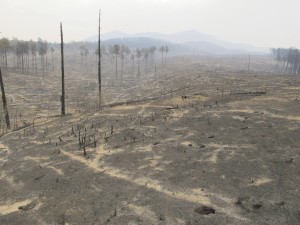Museum of Northern Arizona Future of the Colorado Plateau Lecture Series
 A Science Presentation by Dr. A. Park Williams, Los Alamos National Laboratory
A Science Presentation by Dr. A. Park Williams, Los Alamos National Laboratory
Friday, October 19, 2012 • 7:00-8:30pm • Chase-Braninger Auditorium, MNA
Park Williams is the lead author on a research paper, “Temperature as a potent driver of regional forest drought stress and tree mortality,” published September 30, 2012 inNature Climate Change. His co-authors are a who’s who of southwestern climate change scientists.
Based on an extensive analysis of tree ring data, Williams’ study reveals a bleak future for the forests of the Southwest. He concludes that the relatively steady increase in air surface temperatures that we are experiencing and will continue to experience will push our southwestern forests over the threshold of sustainability by about 2050.
“In the Southwest,” says Williams, “two main factors dictate where trees can and cannot live: the amount of water provided to trees via snow and rain, and the amount of water taken away from trees via evapotranspiration. As the Southwest warms, increasingly more water is removed via evapotranspiration, making less water available for use by forests.”
His talk in Flagstaff will address the following questions:
- How have recent reductions in moisture availability affected southwestern forests so far, and how do these effects compare to the effects of historical drought events such as the 1950s drought and the megadroughts of the 1200s and 1500s?
- What types of climate changes are expected to occur in the Southwest in the coming decades?
- How should we expect these changes to influence future forest growth and survival?”
William DeBuys, author of A Great Aridness: Climate Change and the Future of the American Southwest, says of Williams’ work,”It is exciting to witness the release of the scientific equivalent of a best-seller. [His] work incorporates the kind of innovation and power than only come along once in a great while.”
Dr. Tom Sisk, Ecology Professor at NAU, says, “The science is strong and clearly presented. Its thoughtful consideration demands revision of our understanding of drought, as well as our approach to forest conservation…[T]ype conversion at landscape scales may be inevitable.”
